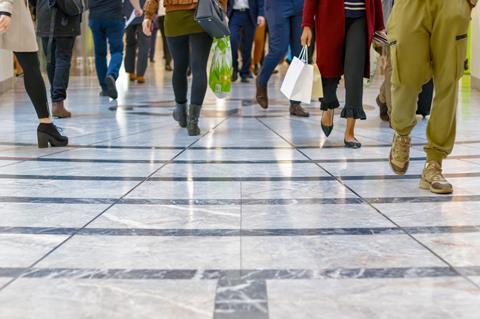
Top story
Retail footfall remains almost 12% down on pre-pandemic levels after slipping back further in October,
According to BRC-Sensormatic IQ data total UK footfall decreased by 11.8% in October compared to 2019, which is two percentage point worse than September and below the three-month average decline of 10.8%.
High street footfall declined 11.6% in October compared to 2018, which is a marginal 0.3 percentage point improvement than last month’s rate.
Retail Parks saw footfall decrease by 3.7%, 1.1 percentage points worse than last month’s rate, while shopping centre footfall declined by 21.8%, a 0.9 percentage points improvement on last month’s rate.
England again saw the shallowest footfall decline of all regions down 11.4%, followed by Scotland at -12.0% and Northern Ireland at -13.1%. Wales saw the steepest decline, with a 16.1% drop.
On a year-on-year basis, total footfall increased by 2.0%; high streets by 7.6% and shopping centres by 2.8%. However, retail parks decreased by 3.2%.
BRC CEO Helen Dickinson commented: “Footfall took a stumble in its slow return to pre-pandemic levels as rising prices and tightening purse strings meant many fewer consumers made trips to the shops. October marked the first full month of higher energy bills for many families after the price cap rose 26%, reducing household discretionary spending. Rail strikes also did no favours, with most cities seeing a fall in footfall; that could be exacerbated by further strike action.
“The next few months will be crucial, as the Christmas spending period begins. Households are unlikely to see the cost of living crisis ease any time soon, and retailers are finding it harder to shoulder the mounting supply chain pressures. To support the public, Government should find ways to help ease the cost pressures which are pushing prices up – not least the £800m increase in business rates bills that will hit retailers, and in turn their customers, in 2023.”
Andy Sumpter, retail consultant EMEA for Sensormatic Solutions, commented: “While Halloween sales may have given some respite to the High Street, shoppers spooked by the rising cost-of-living meant that the reality of growing consumer caution played out in October’s footfall figures.
“As consumers and retailers both adapt to what’s being coined the “new abnormal,” in which economic and political uncertainty creates new – and increasingly frequent – curveballs, retailers will be hoping to minimise disruption to safeguard their Christmas performance. Furthermore, with planned postal strikes in November risking disruption to Black Friday deliveries, retailers will be encouraging shoppers to head in store, rather than risking delayed deliveries when shopping online for Black Friday deals.”
Morning update
On the markets this morning, the FTSE 100 has opened the day up 0.7% to 7,238.5pts.
Early risers include Devro, up 8% to 190.9p, Just Eat Takeaway.com, up 4.4% to 1,568.1p and Naked Wines, up 4.2% to 111.7p.
Fallers include FeverTree, down 1.8% to 964.3p, Sainsbury’s, down 1.6% to 208.3p and Reckitt Benckiser, down 1.1% to 5,682p.
Yesterday in the City
The FTSE 100 closed up 0.6% yesterday to 7,188.6pts.
Sainsbury’s was one of the market’s major risers, climbing 7% to 211.6p after returning to growth in the second quarter, despite profits dropping due to its investment in price to hold market share.
Fellow grocery Tesco was also buoyed by the news, rising 2.9% to 223p.
Other risers included Haleon, up 2.8% to 274.5p, Naked Wines, up 2.5% to 107.2p, British American Tobacco, up 2.3% to 3,350 after falls earlier in the week and Unilever, up 1.2% to 3,995.5p.
The day’s fallers included AG Barr, down 4.7% to 435p, Greencore, down 3.1% to 65.2p, Glanbia, down 2.4% to €11.19, Hilton Food Group, down 2.4% to 609p, Coca-Cola HBC, down 2.4% to 1,870p and McBride, down 2.2% to 24p.



![XOXO-Product-Shot[ALL FLAVOUR]-Sky-1920x1080](https://dmrqkbkq8el9i.cloudfront.net/Pictures/274x183/4/9/2/355492_xoxoproductshotallflavoursky1920x1080_806584_crop.jpg)



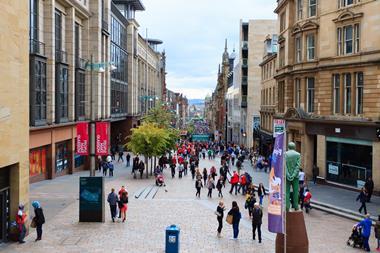

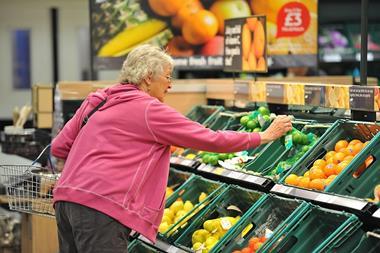




![XOXO-Product-Shot[ALL FLAVOUR]-Sky-1920x1080](https://dmrqkbkq8el9i.cloudfront.net/Pictures/380x253/4/9/2/355492_xoxoproductshotallflavoursky1920x1080_806584_crop.jpg)
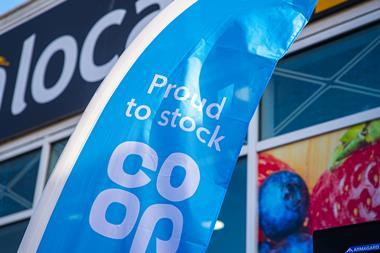


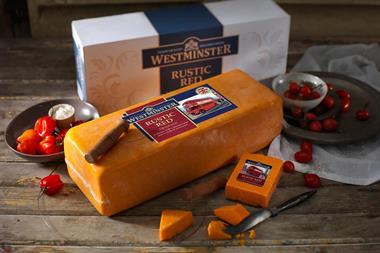
No comments yet